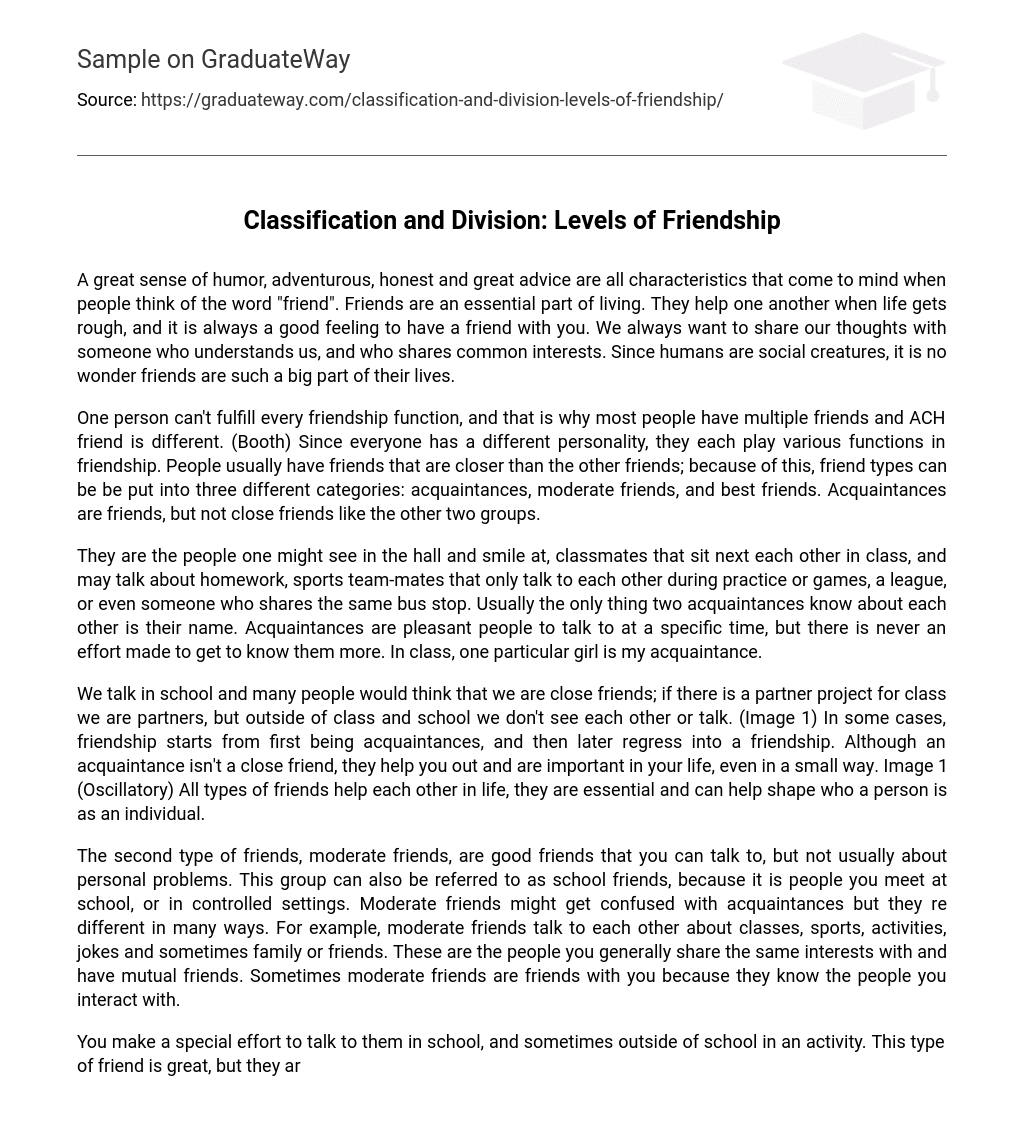When thinking about the word “friend,” characteristics like a sense of humor, adventurousness, honesty, and the ability to give great advice are typically associated. Friends play a vital role in our lives by offering support during challenging times and providing comfort.
As social beings, humans naturally place significance on friendships. We always crave the opportunity to express ourselves to someone who comprehends and shares our interests.
Each individual possesses a distinct personality that impacts their various roles in friendships. Consequently, people typically have multiple friends who fulfill diverse functions. These friend categories can be categorized into three groups: acquaintances, moderate friends, and best friends. Acquaintances stand apart from the other two classifications by virtue of being less intimate than close friends.
They are the individuals one might encounter in the hallway and exchange smiles with, classmates who sit beside each other in class and may discuss homework, sports teammates who only interact during practice or games, members of a league, or even someone who shares the same bus stop. Typically, acquaintances are only familiar with each other’s names. Acquaintances are enjoyable to converse with at a particular moment, but there is no attempt to establish a deeper connection. In my class, there is a specific girl who is my acquaintance.
We communicate and appear to be close friends at school, often partnering together for class projects. However, outside of school, there is no interaction or communication between us. (Image 1) Occasionally, friendships begin as acquaintances and then develop into closer relationships. Even though acquaintances are not close friends, they still provide assistance and hold significance in our lives, albeit in a limited capacity. Image 1 (Oscillatory) All categories of friends offer support and contribute to shaping one’s individual identity.
The second type of friends, known as moderate friends, are dependable friends whom you can engage in conversation with, although typically not about personal matters. This category is sometimes also referred to as school friends, as they are individuals you encounter in educational institutions or structured environments. It is common for moderate friends to be mistaken for acquaintances; however, there are several distinctions between the two. For instance, moderate friends engage in discussions about classes, sports, activities, jokes, and occasionally family or friends. They are generally individuals who share similar interests with you and have mutual friends. At times, moderate friends may befriend you because they are familiar with the individuals you associate with.
Despite enjoying their company, you make an extra effort to communicate with these friends at school and sometimes outside of school during activities. They usually belong to your circle of friends rather than being someone you spend one-on-one time with. (Image 2) These individuals are commonly known as a clique, which refers to a group of friends. (Pang) Typically, you don’t have lunch or go to the movies exclusively with them because you aren’t that close, and maintaining a conversation with them requires effort – not due to a lack of topics but because it takes effort to sustain the flow of conversation.
In the elementary years, children typically have moderate friends, or school friends, as their closest companions. These friendships are important because they are the ones with whom they engage in activities and spend the majority of their adolescent years. According to psychologists from the University of Oregon, these friendships can directly impact a student’s academic success and future challenges in high school and beyond (Nearer).
On the other hand, best friends represent a different type of friendship. They are the ones with whom you share everything, even though you may not spend the most time with them. Best friends are the ones with whom you create the most cherished memories and share the most quality time.
Having friends is crucial for mental, emotional, and physical well-being. It is essential for girls who enjoy confiding in their friends about various problems, as it helps reduce stress levels (Hashish). True friends can provide self-esteem, affection, and support during times of despair, offering hope (Taylor).
Similar to the three types of friends, there existfriends who have a long-standing bond and may have known each other since birth thereby evolving into best friends.
Some individuals form close bonds and become best friends because they share similar experiences and offer each other advice, which strengthens their relationship. Others develop strong friendships because they have many common interests and participate together in activities like sports, clubs, and other pursuits. Best friends are those who have a long history together and engage in meaningful conversations, having similar interests. Best friends often maintain closer contact than other types of friends, remaining true friends for extended periods of time.
Image 3) Image 3 (Life) Humans are naturally social beings who crave connections with others. People strive for acceptance and the need to establish relationships with others. Consequently, people form friendships. While some individuals feel the need to have numerous friends, it is more important to have the right number of friends who can meet their needs. Friends support each other through both challenging and joyful times.





